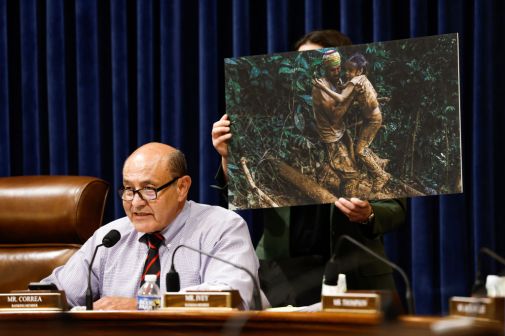Putting the Custom in Customer Experience
Office of Management and Budget official Lisa Danzig gave a presentation to federal leaders recently rolling out the Cross-Agency Priority goals set by the Obama administration to improve federal customer service. The CAP is designed to give agencies an incentive to streamline services, set performance benchmarks and upgrade the customer experience.
But mandates don’t always guarantee progress. How can federal agencies improve their customer experience, or CX?
Citizen demands are rapidly changing, and Americans want their interactions with government to be on par with those they have in the private sector — innovative and easy to use.
Many leaders across government believe their customer service is already pretty good. Almost two-thirds of the more than 400 agency leaders surveyed by the Government Business Council say their customer service is as good as the private sector.
Yet citizens disagree, ranking government customer service at an eight-year low in the American Customer Satisfaction Index® analysis.
Public opinion seems to have been influenced by the problematic launch of Healthcare.gov; the large rise in courtesy disconnects at Internal Revenue Service call centers; and the controversy over wait times at the Department of Veterans Affairs.
Whatever the reasons, government leaders have large hurdles to overcome in order to improve their customer satisfaction scores. Based on the GBC survey, they report that they are constrained by budgets, outdated technologies, cultural resistance to change and a lack of interagency collaboration.
Despite these constraints, customer service excellence is achievable if agencies innovate by taking time to find out what customers need and want; researching potential problems and preventing them; mapping how customers might navigate through an app to make sure that each part of the CX helps potential users; and then collecting feedback that validates those decisions.
Digital tools and open source channels like Yelp, Facebook, Twitter and Instagram let citizens provide direct feedback to federal agencies, just as they do in the private sector. Analyzing this data can build a holistic view of customer preferences — both positive and negative. There are also multi-site social media analytics tools available to agencies so they can monitor their social media presence and quickly identify trends, problems and opportunities. These tools can help government leaders identify customer preferences and guide improvements.
Whether in the federal government or private sectors, such as retailing, media, and travel, leading CX performers share traits in how they allocate resources, use systems and technology, and otherwise run their business. Exploration of the activities and performance of both private and public sector leaders shows 10 leading CX practices that they share in common which other organizations can adopt:
- Hire a chief customer officer.
- Use Customer Relationship Management systems effectively and extend the capabilities of CRM platforms to support CX solutions.
- Provide consistent and seamless omnichannel experiences, including familiar interfaces, comfortable interactions, and smooth channel-to-channel transitions which are core components of CX excellence.
- Offer quick troubleshooting through multichannel customer service solutions to resolve problems rapidly through whatever channels the customer wants.
- Align employee incentives with a customer-centric focus. Tie bonuses and promotions to CX performance and provide culture and loyalty-building informal recognition.
- Tailor experiences based on the customers’ personal history with the company—a customer’s buying patterns and areas of interest over time provide valuable context for creating and enhancing future offerings.
- Deliver information in plain language, with a simple user-centric design. Maintaining focus on customer understanding and acceptance throughout the design process can produce high quality offerings.
- Use “open innovation” and prize challenges to solve problems—programs such as XPRIZE. The XPRIZE Foundation is a non-profit with programs that are opening doors to new breakthroughs and opportunities.
- Provide transparent, real-time process tracking that puts customers in control. Leading organizations enable customers to always know the status of an order or inquiry.
- Develop targeted behavioral objectives from deep insights on customer behavior. Analyze customer preferences, actions and profiles to help guide the relationship into the future.
Implementing just one or two of these practices can help government departments and agencies begin to improve the CX, inspire excellence in employee performance and improve efficiency. Now more than ever, moving forward with CX programs presents an opportunity to reimagine government operations from the citizen’s point of view.




